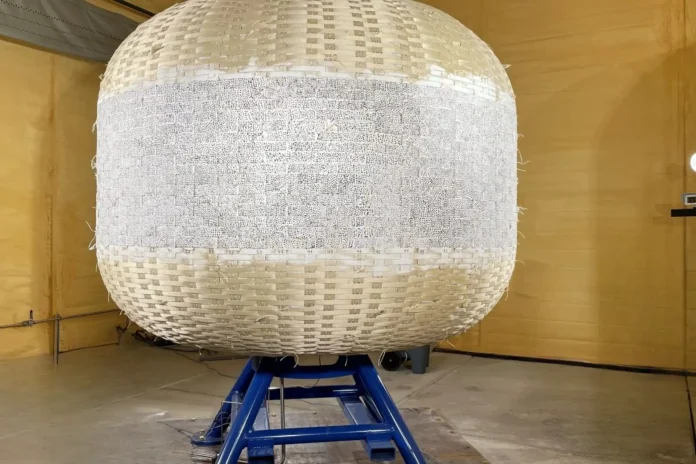Sierra Space, a leading commercial space company, has achieved significant success in developing inflatable space habitats by successfully testing a full-scale prototype of its Large Integrated Flexible Environment (LIFE) module. The test, conducted at NASA’s Marshall Space Flight Center, demonstrated that the module goes beyond the agency’s safety requirements, creating a way for its use in future commercial space stations.
Space Habitats Test Exceeds Expectations
The test, known as an ultimate burst pressure test, involved inflating the LIFE module to its breaking point. The module held a pressure of 77 pounds per square inch (psi), nearly 27% above NASA’s recommended level and four times its maximum operating pressure. This impressive result signifies the strength and reliability of the module’s pressure shell, a key component for ensuring astronaut safety in space.
Years of Development Result in Successful Test
The full-scale test follows a series of successful subscale tests conducted by Sierra Space. These earlier tests, including one in September featuring a module equipped with a window simulation, provided valuable data and helped refine the design for the full-scale prototype.
The LIFE module’s pressure shell is made of Vectran straps, a high-strength fiber known for its durability and performance in space environments. Sierra Space partnered with ILC Dover to develop this critical component, ensuring the module’s ability to withstand difficult conditions in space.
Spacious Design for Future Habitation
When fully inflated, the LIFE module has a volume of 300 cubic meters, roughly one-third the habitable volume of the International Space Station (ISS). This spacious design allows astronauts to live and work comfortably in orbit. Sierra Space has even proposed a larger version, designed to fit into a seven-meter payload fairing and offering a volume of 1,400 cubic meters.
Revolutionizing Space Exploration with Inflatable Technology
“Sierra Space’s inflatable space station technology offers the absolute largest in-space pressured volume, the best unit economics per on-orbit volume and lowest launch and total operating costs,” stated Tom Vice, chief executive of Sierra Space. This innovative technology has the potential to revolutionize space exploration by providing cost-effective and expandable living quarters for astronauts on long-duration missions.
Pathfinder Mission and Orbital Reef Integration
The LIFE module is envisioned as a critical component of Orbital Reef, a commercial space station developed by Sierra Space in collaboration with Blue Origin and other partners. However, Sierra Space also plans a standalone “Pathfinder” mission featuring a LIFE module. The company received support from NASA through an unfunded Space Act Agreement, granting access to expertise and data to advance the Pathfinder mission and the crewed version of its Dream Chaser spaceplane.
Future Development and Launch Plans
Sierra Space has outlined further testing for the LIFE module technology throughout 2024, focusing on refining the atmospheric barrier and micrometeoroid and orbital wastage protection layers. The company anticipates starting flight hardware production for LIFE within the next 24 to 36 months, bringing this promising inflatable habitat technology closer to reality.
The successful test of the full-scale LIFE module represents a significant step forward for Sierra Space and its vision for inflatable space habitats. This innovative technology has the potential to transform space exploration by providing more affordable and spacious living quarters for astronauts, paving the way for longer-duration missions and the expansion of human presence in space.



